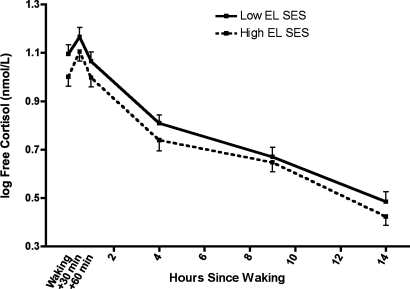Fig. 3.
Diurnal cortisol output by early-life SES. Subjects collected saliva 6 times daily for 3 days, and cortisol was measured by immunoassay. Low early-life SES was associated with a relative increase in overall cortisol output across the monitoring period (P = 0.04). There were no SES differences in magnitude of the waking response or the shape of the diurnal rhythm across the day (P > 0.77).

